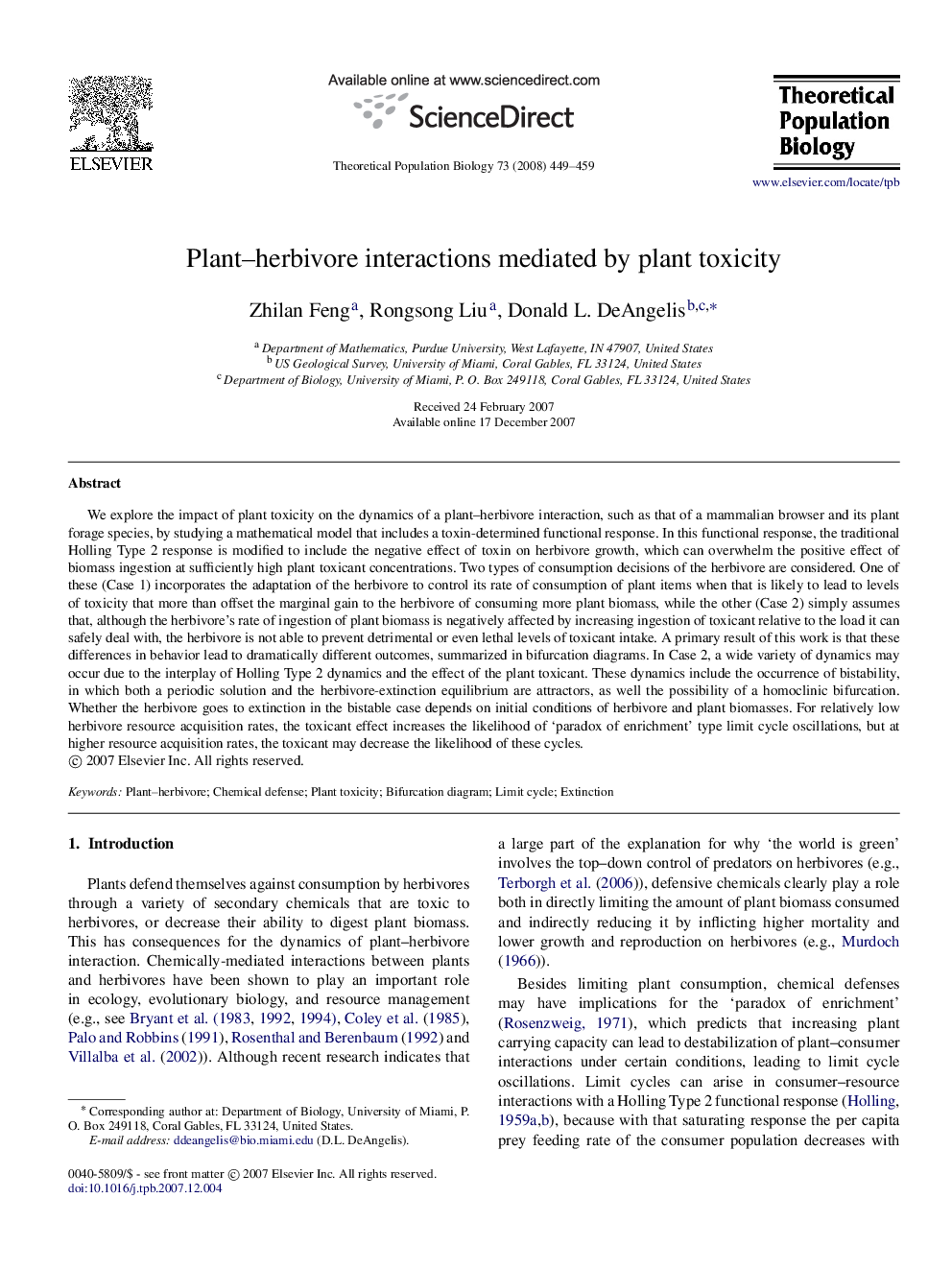| کد مقاله | کد نشریه | سال انتشار | مقاله انگلیسی | نسخه تمام متن |
|---|---|---|---|---|
| 4502622 | 1320586 | 2008 | 11 صفحه PDF | دانلود رایگان |
عنوان انگلیسی مقاله ISI
Plant-herbivore interactions mediated by plant toxicity
دانلود مقاله + سفارش ترجمه
دانلود مقاله ISI انگلیسی
رایگان برای ایرانیان
کلمات کلیدی
موضوعات مرتبط
علوم زیستی و بیوفناوری
علوم کشاورزی و بیولوژیک
علوم کشاورزی و بیولوژیک (عمومی)
پیش نمایش صفحه اول مقاله

چکیده انگلیسی
We explore the impact of plant toxicity on the dynamics of a plant-herbivore interaction, such as that of a mammalian browser and its plant forage species, by studying a mathematical model that includes a toxin-determined functional response. In this functional response, the traditional Holling Type 2 response is modified to include the negative effect of toxin on herbivore growth, which can overwhelm the positive effect of biomass ingestion at sufficiently high plant toxicant concentrations. Two types of consumption decisions of the herbivore are considered. One of these (Case 1) incorporates the adaptation of the herbivore to control its rate of consumption of plant items when that is likely to lead to levels of toxicity that more than offset the marginal gain to the herbivore of consuming more plant biomass, while the other (Case 2) simply assumes that, although the herbivore's rate of ingestion of plant biomass is negatively affected by increasing ingestion of toxicant relative to the load it can safely deal with, the herbivore is not able to prevent detrimental or even lethal levels of toxicant intake. A primary result of this work is that these differences in behavior lead to dramatically different outcomes, summarized in bifurcation diagrams. In Case 2, a wide variety of dynamics may occur due to the interplay of Holling Type 2 dynamics and the effect of the plant toxicant. These dynamics include the occurrence of bistability, in which both a periodic solution and the herbivore-extinction equilibrium are attractors, as well the possibility of a homoclinic bifurcation. Whether the herbivore goes to extinction in the bistable case depends on initial conditions of herbivore and plant biomasses. For relatively low herbivore resource acquisition rates, the toxicant effect increases the likelihood of 'paradox of enrichment' type limit cycle oscillations, but at higher resource acquisition rates, the toxicant may decrease the likelihood of these cycles.
ناشر
Database: Elsevier - ScienceDirect (ساینس دایرکت)
Journal: Theoretical Population Biology - Volume 73, Issue 3, May 2008, Pages 449-459
Journal: Theoretical Population Biology - Volume 73, Issue 3, May 2008, Pages 449-459
نویسندگان
Zhilan Feng, Rongsong Liu, Donald L. DeAngelis,